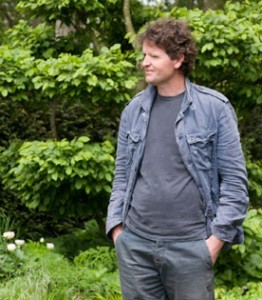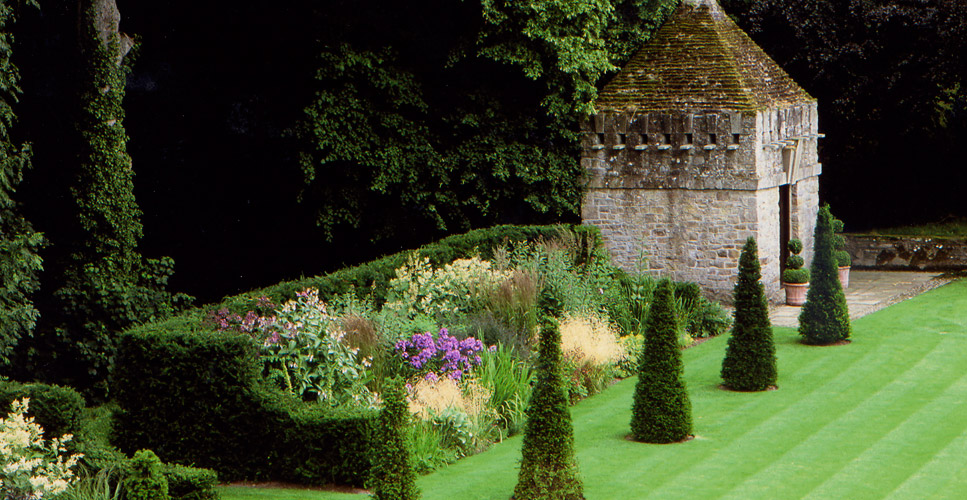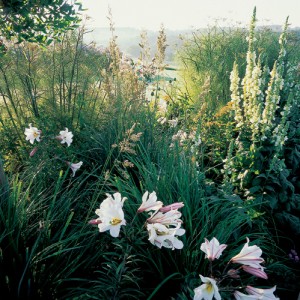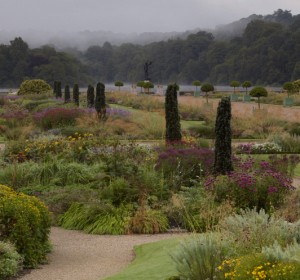Tom Stuart-Smith: Finding a Language for the Modern Garden
Posted in Learning Experiences on February 5 2013, by Sonia Uyterhoeven
Sonia Uyterhoeven is the NYBG‘s Gardener for Public Education.

Garden designers are about vision. They transform worn out frameworks of existing gardens, empty spaces, and natural areas into poetic visions. Where most of us will muster up all of our creative juices only to create something that still looks like we threw a bunch of plants into the ground, the seasoned designer makes the garden seem simultaneously magical and effortless, as if their creation was always meant to occupy the space. On January 31, the well-known British garden designer Tom Stuart-Smith kicked off the 13th Annual Winter Lecture Series at the NYBG, beginning with a lecture on “The Modern Garden: Finding a Language.”
In an eclectic discussion that covered sources of inspiration ranging from cellular biology and psychology to Schumann and Wagner, Stuart-Smith invited us into the inner workings of his mind, giving us a very personal account of the impetus for his designs.
The lecture began with a dissection of gardens that were pivotal in his development as a designer. Through his analysis of the gardens, the audience began to understand how he perceives a landscape and how he structures his artistic vision. This discussion was complemented by glorious images of his own work, which illustrated how his garden designs are crafted from the foundation of earlier inspiration.

His lecture was all about understanding process–or rather, Stuart-Smith’s process–and it was filled with gems. At one point Stuart-Smith said that the point of garden design is to make the space speak with a clear yet nuanced voice. Good design is about clarity. It is about making sense of a space. Yet the gardens that take our breath away are always nuanced. What a grand and insightful way of describing structure, unity, repetition, form, texture, and contrast.
Stuart-Smith discussed at length how to understand and create order in a garden; the structure placed on the garden will influence how you move through and experience the space. In his own work, Stuart-Smith is interested in how the garden relates to the surrounding landscape, and describes garden design as a balance between natural process (nature) and human participation.

His designs are about different levels of habitation starting with a highly ornamental foreground at the heart of the garden, followed by an organized, cultivated landscape which ultimately moves out into the surrounding landscape, or the “wilderness.” The spatial progression from the intimate to the various natural phases not only creates movement, but also changes the experience of being in the garden. The intimate garden acts as a refuge or a retreat, while the transition into large, open space is about exploration, immersion, and a loss of control over the immediate surroundings.
Stuart-Smith abhors the idea of a cluttered garden where every space needs to be filled. He opens up vistas and advocates the idea that gardens are places where events need to be staggered throughout a space. In some of his projects, Stuart-Smith has empty garden rooms that act as corridors, allowing the visitor to move from one place to another. Large water features also serve to break up space and divide complex planting areas.
One of my favorite moments in the lecture was his description of British garden design. He described it as order mixed with disorder. One of my sisters once told me that I was the most organized, disorganized person she knew, so this description lies close to my heart. Stuart-Smith’s description is a beautiful way of describing the informal planting within the strong lines of structure that you find in many modern designs.

Stuart-Smith’s designs apply this principle of ordered disorder. He described his planting bed as being composed of ecological quadrates. The soft, complex planting of sages, grasses, rues, and sea hollies stand in stark contrast to strong lines created by hedges, pathways, and linear water features. The structure gives it definition, while the wild planting provides texture and vitality. Stuart-Smith’s designs are glorious–it would be easy to spend an entire day getting lost in one of them.
In a few weeks, we will be “getting lost” in a native landscape ourselves. On February 21, Winterthur‘s Director of Garden and Estate, Chris Strand, will be the second speaker for the Annual Winter Lecture series with a talk on “Winterthur: The Last Wild Garden.” You can find more information on the lecture series–or register for seats–through our Adult Education page.
Photos courtesy of Tomstuartsmith.co.uk and their respective creators.

